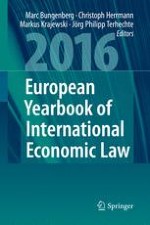2016 | OriginalPaper | Chapter
Karl Sauvant and Federico Ortino, Improving the International Investment Law and Policy Regime: Options for the Future
Helsinki: Ministry for Foreign Affairs of Finland, 2013; ISBN 978-952-281-217-9
Author : Julien Chaisse
Published in: European Yearbook of International Economic Law 2016
Publisher: Springer International Publishing
Activate our intelligent search to find suitable subject content or patents.
Select sections of text to find matching patents with Artificial Intelligence. powered by
Select sections of text to find additional relevant content using AI-assisted search. powered by
